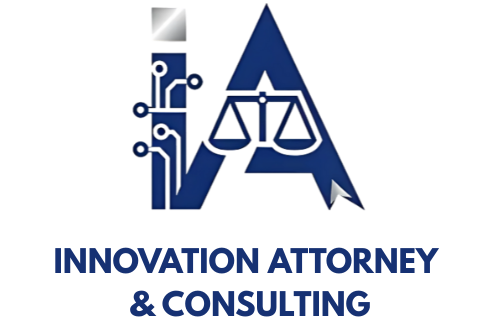If you work with technology, data, or SaaS clients, you’ve probably heard the phrase “SOC 2 audit.” It’s more than a technical exercise — it’s a legal and operational framework for earning trust. SOC 2 (System and Organization Controls type 2) measures how a company manages data under five principles called the Trust Services Criteria: Security, Availability, Processing Integrity, Confidentiality, and Privacy.[i]
While auditors handle the actual controls testing, attorneys play a pivotal role in shaping the governance, contracts, and documentation that make compliance possible. Below are ten ways lawyers contribute to a strong SOC 2 posture — and the legal strategy behind each.
1. Drafting Foundational Policies
Attorneys help create or review the dozens of internal policies auditors expect to see, including (but not limited to):
- Information Security Policy
- Data Retention & Destruction Policy
- Vendor Risk Management Policy
- Incident Response & Breach Notification Policy
- Access Control & Acceptable Use Policies
- Encryption & Key‑Management Policies
Legal Value:
- Policies serve as evidence of governance in litigation or regulatory scrutiny.
- Lawyers ensure policy wording aligns with contractual obligations, regulatory frameworks (e.g., data breach laws, privacy statutes), and internal controls.
- Ensuring alignment reduces “paper‑compliance” risk where the policy exists but the practice doesn’t.
2. Aligning Contracts with Security Obligations
SOC 2 requires that third‑party contracts reflect consistent standards. Lawyers ensure SaaS agreements, NDAs, and subcontractor terms include confidentiality, security, and data‑handling clauses that match internal controls.[ii]
Legal Value:
- Contracts become both risk‑allocation and trust‑building tools.
- Without proper wording, you may promise more than your controls support or have mismatched obligations.
- Lawyers manage scope, liability, warranties, indemnities and audit rights tied to vendor/SaaS relationships.
3. Creating and Updating Privacy Policies
Public‑facing Privacy Policies must accurately describe data collection and use. Attorneys ensure these align with both SOC 2 privacy criteria and data‑protection laws (e.g., General Data Protection Regulation (GDPR), California Consumer Privacy Act (CCPA), Health Insurance Portability and Accountability Act (HIPAA)).[iii]
Legal Value:
- Violations of public privacy policy statements can trigger regulatory enforcement or deceptive‑trade‑practices risk.
- Lawyers ensure consistency between “what you say” (policy) and “what you do” (controls) as this is a key audit and legal risk area.
4. Negotiating Data Processing Agreements (DPAs)
DPAs formalize rights and obligations of parties involved in data processing. Lawyers draft or review them to confirm alignment with SOC 2’s confidentiality and privacy principles — especially breach notification timelines and sub-processors.[iv]
Legal Value:
- DPAs connect your vendor‑ecosystem to your compliance posture.
- Lawyers ensure you’re not assuming unmanageable risk (e.g., unlimited liability) or overlooking required obligations.
5. Developing SaaS Customer Agreements
A SOC‑2‑ready SaaS agreement should include some of the following: security representations, uptime commitments, and data return/deletion provisions. Attorneys craft language that satisfies clients while protecting the company from over‑broad obligations.
Legal Value:
- Clear limitations, disclaimers, and representations reduce your exposure while strengthening trust.
- Lawyers align service‑level commitments with your actual control environment.
6. Guiding Incident Response & Disclosure
In a breach, legal counsel collaborates with security teams to manage privilege, regulatory notifications, and contractual disclosure requirements — ensuring the company’s SOC 2 posture isn’t undermined. (Okay, this isn’t really for SOC 2 readiness, but attorneys do keep these scenarios in mind when crafting documentation).
Legal Value:
- Failure to respond properly can damage both your compliance certification and your legal defense.
7. Mapping Legal Risk to Trust Services Criteria
Attorneys translate the Trust Services Criteria into legal frameworks, linking each control area to potential liability exposure and risk‑mitigation strategies.[v]
For example:
- Security → risk of data breach lawsuits or regulatory enforcement.
- Confidentiality → risk of trade secret loss or contractual damages.
- Availability → risk of SLA claims and service interruption.
- Privacy → regulatory obligations under GDPR/CCPA.
- Processing Integrity → risk of false or misleading outcomes or data‑integrity claims.
Legal Value:
- This mapping helps link audit/findings to board‑level risk understanding and legal‑compliance strategy.
- Attorneys bring clarity to how technical‑controls issues map to real legal exposure.
8. Training and Governance
SOC 2 requires documented training and oversight. Counsel help design governance charters, compliance‑training programs, and record‑keeping practices.
Legal Value:
- Documented governance and training evidence a “reasonable‑efforts” defense in regulatory or breach scenarios.
- Lawyers assist in ensuring your documentation is defensible and integrally tied to your policies and controls.
9. Vendor and Sub-processor Due Diligence
Legal teams draft questionnaires, evaluate vendor SOC 2 reports, and negotiate data‑sharing terms to maintain downstream compliance.[vi]
Legal Value:
- Vendor risk is enterprise risk. Lawyers ensure that vendor controls align with your obligations and that your contracts reflect remediation/termination triggers tied to vendor SOC 2 lapses.
10. Audit Support and Representation
Finally, attorneys assist during audits — reviewing evidence requests, validating policy language, and responding to legal inquiries from auditors.
Legal Value:
- Lawyers help navigate the boundary between auditor demands and privileged legal advice.
- They ensure that your narrative aligns across policies, contracts, training and actual controls — critical for a clean audit and legal posture.
⚖️ Final Thoughts: The Legal Backbone of SOC 2
SOC 2 isn’t just a box to check, it’s a comprehensive trust framework. Lawyers bridge the gap between technical security and legal accountability — ensuring that what’s written in the policies, contracts, and disclosures truly aligns with what’s practiced day‑to‑day. For organizations in the SaaS, tech or data‑driven space, this legal layer transforms SOC 2 from a checkbox into a strategic asset.
[i] https://cloudsecurityalliance.org/blog/2023/10/05/the-5-soc-2-trust-services-criteria-explained
[ii] https://aaronhall.com/legal-review-of-soc-2-clauses-in-vendor-selection/
[iii] https://blog.proteusdiscovery.com/critical-role-of-security-and-compliance-for-legal-services-companies
[iv] https://www.imperva.com/learn/data-security/soc-2-compliance/
[v] https://www.wolterskluwer.com/en/expert-insights/understanding-soc-2-certifications-principles-compliance-audit-procedures
[vi] https://www.esquiresolutions.com/soc-reports-provide-critical-insights-on-vendor-data-security-practices/
